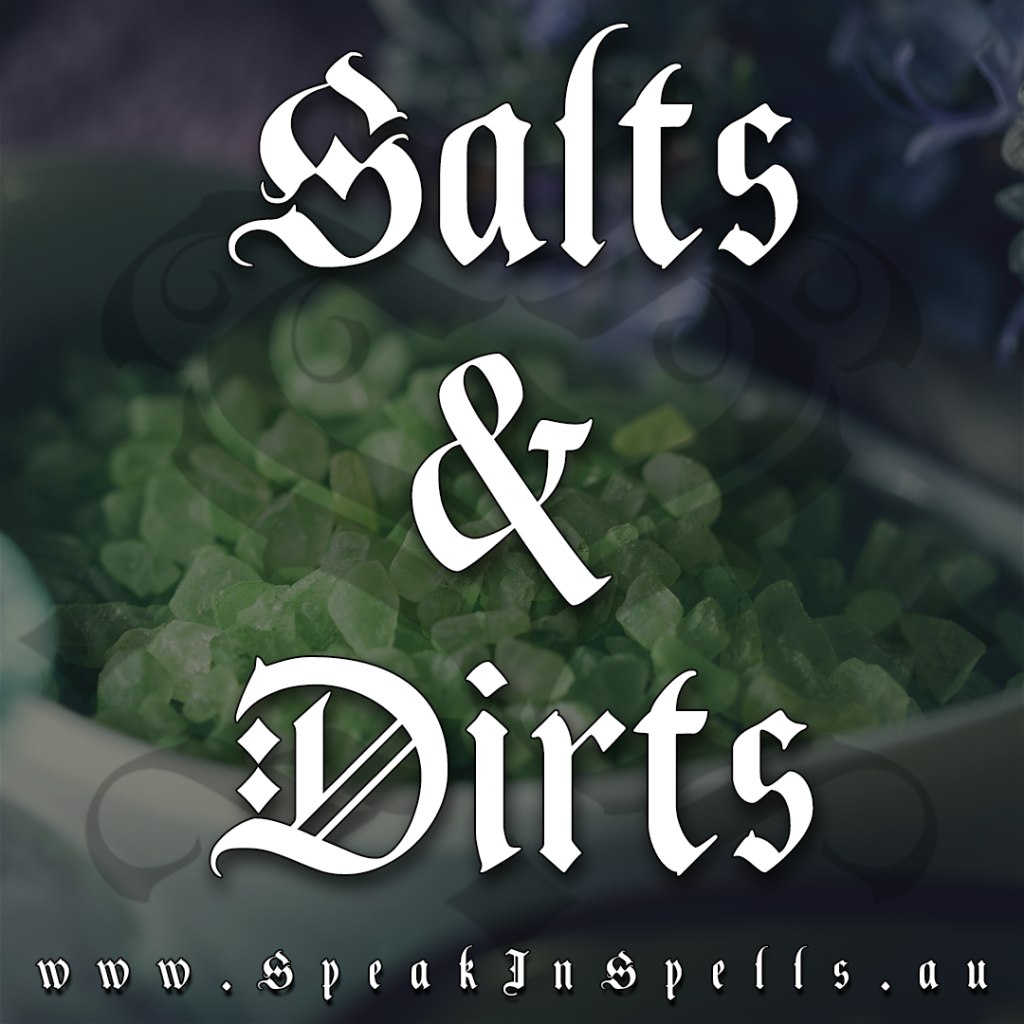
This article delves into the world of Salts and Dirts in witchcraft, building on last month’s discussion about powders, ashes, and dusts. I aim to highlight the distinct differences and unique magical properties/potential each one holds.
Regarding the controversy about reintroducing salt into the earth: it can be harmful, but it won’t devastate your entire property. Yes, salt damage can be reversed with proper care, unless you’re aiming for a malicious outcome with a spell.
Now, I’m still a little under the weather, so I hope this article is coherent, although I have my doubts. However, if you have any questions, please leave a comment. I’ll respond as soon as I can to try and clear up my ramblings. Anyway!
Are They Necessary?
No, you don’t necessarily need to use them, just as with ashes, powders, and dusts, but incorporating salts and dirts can enhance the magic you’re working to achieve. Consider them additional tools in your magical arsenal.
For example, think about the common advice of lighting a candle and sitting by a photo of a loved one for communication. Now, imagine adding some dirt from the grave of the loved one you wish to communicate with. This simple addition creates an extra layer, strengthening and deepening the effectiveness of your spell.
Little things like this, knowing the properties and differences between mediums in magic is something that’s often looked over or forgotten about. Each medium is important and has its place within the Craft of magic.
Salts in Witchcraft
Salt blends primarily consist of salt that is often enriched with natural oils, herbs, and sometimes powders.
A lesser known aspect of salt is its ability to mimic other spirits, a trait stemming from its unique energy absorbing ability. Salt crystals are adaptable. They absorb the energy and currents of other entities and can project this energy outward. While they might not match the potency of other spirits or foster the same inter-spirit relationships needed for high magic, they are quite effective in urgent situations.
Salt also excels in grounding/rooting magic. Like dirts, it anchors magic to a location, but with a significant difference: its affinity with Water gives it a greater capability to move magic from place to place, unlike dirt.
On top of this, salt is inherently cleansing. Many spells that include salt also carry a purifying effect, which is especially beneficial if you aim to prevent any negativity from lingering after your spellcasting.
Salt can also be used for cursing, given it’s ability to absorb energy and spirits. How you use it is up to you.
Now, in regards to salts being the “evil” medium in witchcraft when it comes to burying it. Bury it.
if you’re worried about what it’s doing to the dirt around it, add compost. Social media has everyone ON social media believing that pinch of salt added to the earth kills everything around it for good, and I am so beyond sick of that notion.
Learn permaculture, or general gardening. /end of rant
Dirts in Witchcraft
Dirts come from specific locations, such as graveyards, around hawthorn bushes, churches, and crossroads, among others, including places as varied as courthouses, springs, police stations, or any ground you believe is symbolic. Fertile soil and various sands also play a part. You can add another layer of power to these dirts by mixing them with herbs or, on occasion, ashes. Their power derives from the spirits inhabiting their place of origin.
Take graveyard dirt, for example, it naturally attracts the spirits of the dead. Bank dirt, on the other hand, draws in spirits linked to abundance and debt. Similarly, hawthorn dirt becomes a focal point for the spirits of the liminal and the Fair Folk, while Hanged Man’s Dirt magnetises malicious and angry spirits.
When you use dirt in your practices, you’re forging a connection between your work and the spirit within that dirt. Adding herbs to the dirt allows you to fine tune this connection. Abundance dirt, a blend of bank dirt or soil from a stately home mixed with specific herbs, is an excellent example. This combination focuses on attracting abundance while warding off debt-related energy/spirits.
Dirts also serves as an anchor, rooting your practice to their source locations. However, unlike dusts and powders, dirts influence is limited in range. It’s up to you to extend its reach. You either need to transport the dirt to a specific person or place or bring something from that person or place back to your dirt. Sometimes, a symbolic tag of the person is sufficient.
Although its effects unfold slowly, dirts are potent tools in spirit work, deeply connected to the Earth courts.
It Matters
Usually, I’m all for following your intuition in magic, but when it comes to choosing between dirts, salts, powders, ashes, and dusts, it categorising them really does matter.
Each possesses its unique energy and power, contributing distinct layers to any spell you cast. Grouping them all as the same doesn’t make much sense to me because I see magic as a practical art. Recognising and differentiating between these mediums can elevate your spellweaving to new heights allowing you to reach all new parts of the Craft you didn’t know was possible.
I hope this helps a little with understanding and navigating the spells I create for you, and may even help you to create all new spells.
Speak in Spells again soon!

